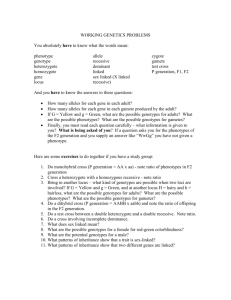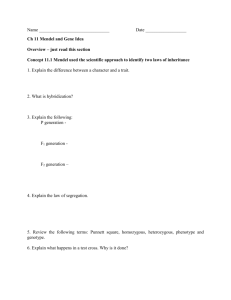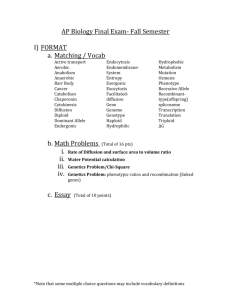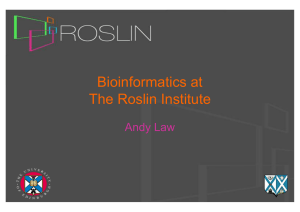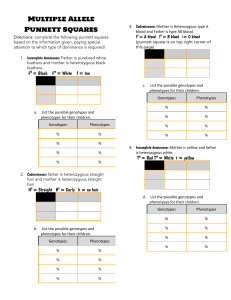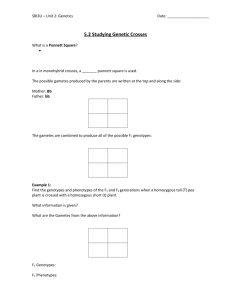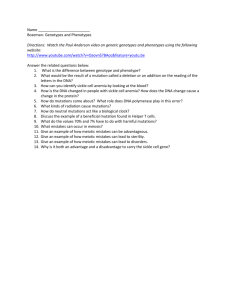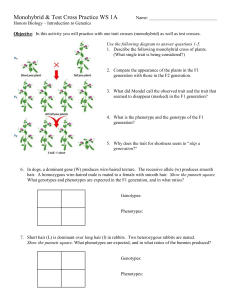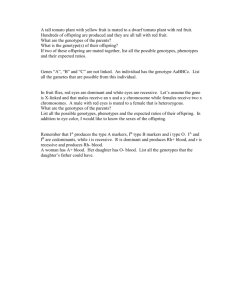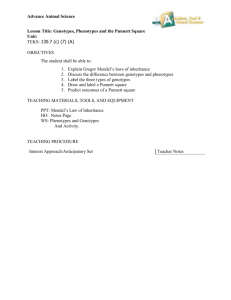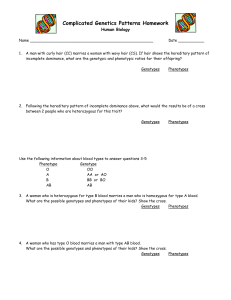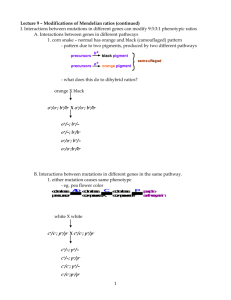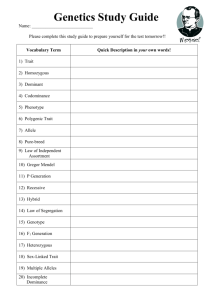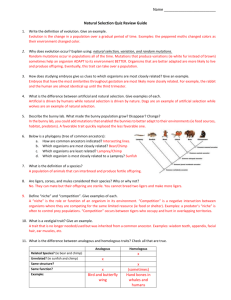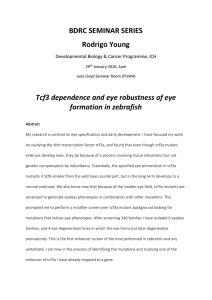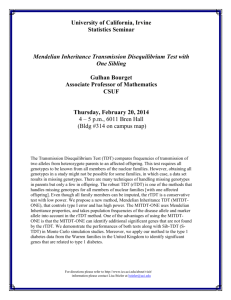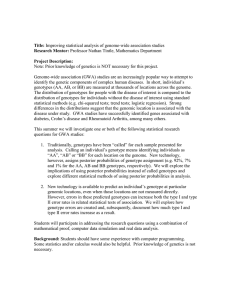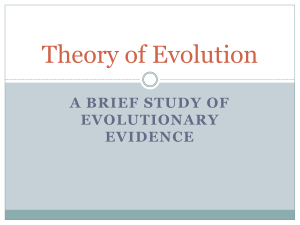Study Guide for Evolution Test
advertisement
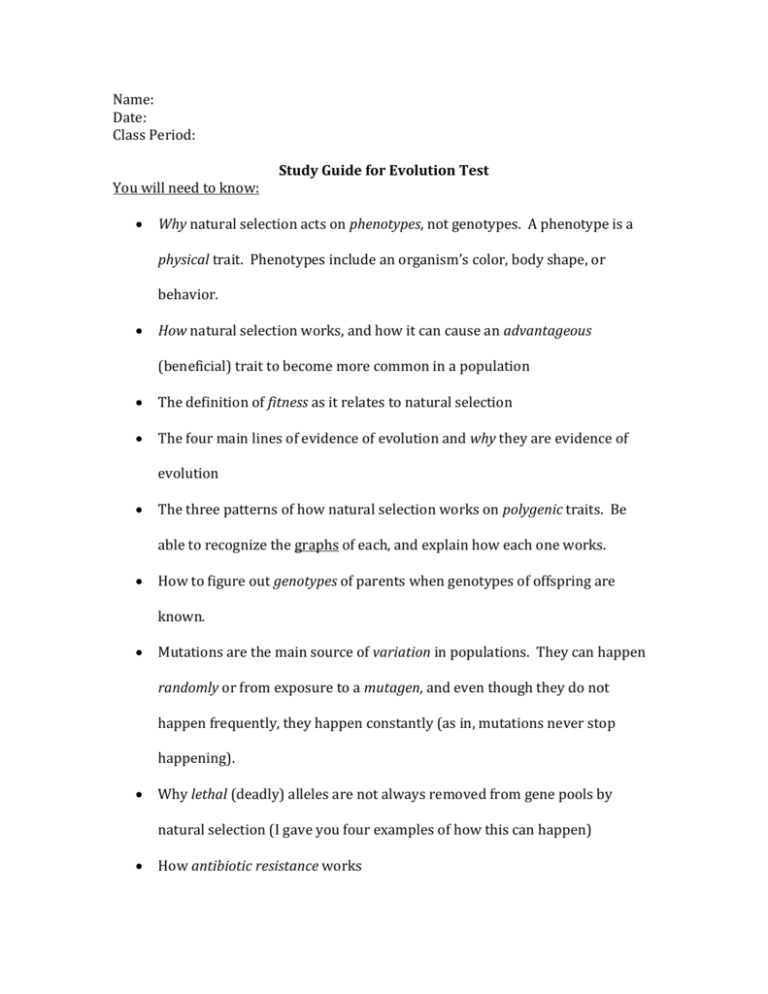
Name: Date: Class Period: You will need to know: Study Guide for Evolution Test Why natural selection acts on phenotypes, not genotypes. A phenotype is a physical trait. Phenotypes include an organism’s color, body shape, or behavior. How natural selection works, and how it can cause an advantageous (beneficial) trait to become more common in a population The definition of fitness as it relates to natural selection The four main lines of evidence of evolution and why they are evidence of evolution The three patterns of how natural selection works on polygenic traits. Be able to recognize the graphs of each, and explain how each one works. How to figure out genotypes of parents when genotypes of offspring are known. Mutations are the main source of variation in populations. They can happen randomly or from exposure to a mutagen, and even though they do not happen frequently, they happen constantly (as in, mutations never stop happening). Why lethal (deadly) alleles are not always removed from gene pools by natural selection (I gave you four examples of how this can happen) How antibiotic resistance works Why diversity within a species increases the chance that some organisms will survive Why a lot of biodiversity increases the chance that some species will survive a drastic environmental change Charles Darwin was a naturalist who studied organisms all over the world and published a book describing how natural selection is the mechanism of evolution How isolation can lead to speciation, and the four types of isolation The three conditions that must be met for natural selection to take place How genetic drift occurs and the differences between the founder effect and a bottleneck How to calculate allele frequency when given the % of homozygotes and heterozygotes in a population How scientists believe the dinosaurs died The names and approximate dates (in MYA/millions of years ago) of the mass extinctions that have happened on earth The conditions needed for genetic equilibrium to occur

